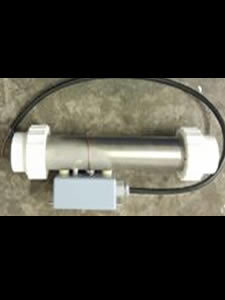Jacuzzi Heater Casing
The spa heater casing refers to the protective housing or enclosure that surrounds the spa’s heating element and associated components. It serves several important functions in maintaining the spa’s heating system. Here’s some information about spa heater casings:
Protection and Safety: The primary purpose of the spa heater casing is to protect the heating element and other internal components from damage and exposure. It provides a barrier against water, moisture, and debris that could potentially harm the heating system.
Insulation: Spa heater casings often incorporate insulation materials or layers that help retain heat generated by the heating element. This insulation minimizes heat loss and improves the overall energy efficiency of the spa, reducing operating costs.
Heat Distribution: The casing design may include features that promote the even distribution of heat throughout the spa water. It ensures that the heated water is evenly circulated, providing consistent temperatures and a comfortable spa experience.
Material and Construction: Spa heater casings are typically constructed using durable and corrosion-resistant materials such as stainless steel or high-grade plastics. These materials are capable of withstanding the hot and humid conditions in the spa environment and offer long-term durability.
Access and Maintenance: Some spa heater casings are designed to be removable or have access panels, making it easier for technicians to service or repair the heating system. This allows for inspection, cleaning, and potential replacement of components when needed.
Compatibility and Installation: When replacing a spa heater casing, it is important to ensure compatibility with the specific spa model and heating system. The new casing should be designed to fit securely and properly align with the existing plumbing and electrical connections.
Safety Considerations: Spa heater casings should meet applicable safety standards and regulations. They should have adequate insulation to prevent accidental burns and should incorporate safety features such as high-limit temperature sensors or thermal cut-off switches to prevent overheating.
It’s important to note that the specific design, features, and components of spa heater casings can vary depending on the manufacturer and spa model. When dealing with spa heater casings, it’s recommended to consult the spa manufacturer or a qualified technician for guidance on installation, maintenance, and repairs.
Showing all 2 results

